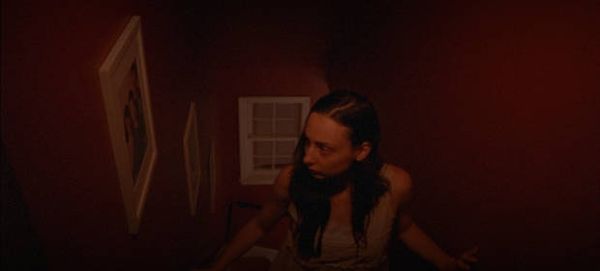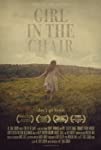Eye For Film >> Movies >> Girl In The Chair (2015) Film Review
Girl In The Chair
Reviewed by: Andrew Robertson

Opening with the suggestion of a rocking horse, this is a dense and delicate short, full of shadow and portent. Surreal movement, beyond the jerkiness of film, segues into stop motion around our protagonist. Bound with wire from an improbable spool Genie (named only in the credits), is held in a small room. Around her allies, a cymbal smashing monkey on a tin tricycle, letter blocks, a kindly bear.
Before her a door, in the dirt and scuff of grime the sense of a forest. Her escape is not the last in these few minutes, but it is the start. Ashley Trawinski has no dialogue, monologue, in a complex and compelling sound design no audible speech. Yet her presence and her absences are the centre of the film. Framed by Marc Katz' cinematography, what feels like the grain of film gives this all a datelessness.
It is some indeterminate late-American era, some indeterminate early-American evening. Today's paper has not the detail to be read but the clocks do, and disagree. Freed from a basement by a staircase given depth by one of many low angles, she makes it to the open. A palette shift that rivals that of Dorothy's foray from Kansas follows, verdant greens where had been virulent grimes. The music swells, pieces by Aled Roberts, then Ravel and Vaughn Williams' The Lark Ascending make the score. Genie ascends too.
One of many subtleties of composition, changes of makeup. Not all here subtle though. Billed as horror, constructed with genre features, there are scares. This is a tale that does not start gently, and is unafraid to show its teeth. In dreamlike uncertainties there are flashbacks, sequences that further put the lie to reality. Dancing on fresh cut grass, she emerges from one set of landscapes to another. From the pastoral to the rectilinear impositions of suburbia. Painted sidings, polished sedans. Possible secrets.
M.Louis Gordon writes, directs. Only his second short, and so far most recent in those roles, this is a strong work. No stranger to work behind the camera, he has a huge volume of credits for sound work. This is clear here, much done with the design (also his) to suggest and suspend. It is not just the skirl of strings and the framing that makes the eagle above the door suspicious. It is not just Trawinski's performance, though hers is central in a small cast. It is not just the beautifully constructed shots, light through doors, stairs like a prison of flesh, the delicate arrangement of photo frames. It is not just colour coding and grading, tatty whites, sweaty flesh, bright reds, youthful glow.
It is a totality, one made stronger by where it is incomplete. There could be, and are implications of, apocrypha. Revelation here is one of feeling, interpretation here as fluid and free as the camera over the fields. What might be weaknesses work for it. The falsity of stop motion is no less than the animated faces of conformity. The lack of solid explanation keeps us at the intersection of the ethereal and corporeal. With the slow addition of contexts that which has been seen and that which has been implied change character and tone. From first escape to the last the mixture of what is run from and run to is ever changing, ever captivating.
Reviewed on: 09 Apr 2021















